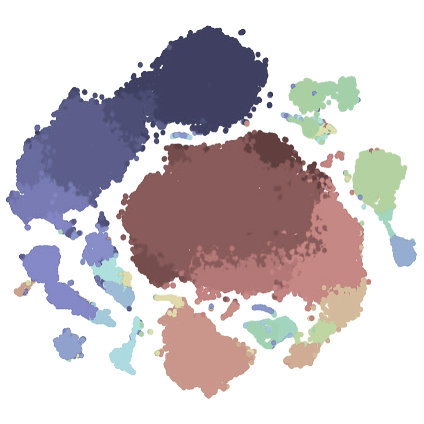Overview
My research involves the development and application of new high-dimensional cytometry, single-cell, and imaging methods, as well as novel computational and machine learning analysis approaches, to comprehensively map dynamic immune responses at the single-cell level over time and across multiple biological tissues, to reveal key mediators of inflammation and immunity. To enable this, I co-lead a multi-disciplinary collaboration, drawing from multiple research and technology labs at the University of Sydney, integrating expertise in immunology, infectious disease, high-dimensional single-cell & imaging technologies, computational biology, and data science. My team and I work to develop novel methods and analytical approaches, and apply these approaches collaboratively to profile inflammatory responses in a variety of disease settings. In particular, we apply these to the study of infectious disease, including emerging pathogens such as SARS-CoV-2/COVID-19, Zika virus encephalitis, and West Nile virus encephalitis. We then explore how these datasets, technologies, and analysis methodologies may contribute to, or benefit from, efforts such as the Human Cell Atlas (HCA). We apply our high-dimensional technologies and analysis approaches to study inflammation and infectious disease. A particular focus has been the study of immunopathology, where the immune response to infection may be a significant driver of disease.
My work in developing single-cell technologies and analysis methods can be found on my technology and analysis pages.
An overview of my research work can be found in this Oz Single Cell webinar 2020 on computational biology and this Fluidigm webinar 2020, featured on the ‘COVID-19 resources’ page.
SARS-CoV-2 and COVID-19

The severe acute respiratory syndrome coronavirus 2 (SARS-CoV-2) pandemic has caused >101 million infections and 2.18 million deaths worldwide (as of January 28, 2021). Infection with SARS-CoV-2 results in a spectrum of clinical presentations, called coronavirus disease 2019 (COVID-19), ranging from asymptomatic to fatal disease. Through a collaboration with the Doherty Institute and the University of Melbourne, we comprehensively profiled the immune response to SARS-CoV-2 in a cohort of COVID-19 patients. Our work demonstrated that patients with severe disease exhibited an excessive and hyper-activated immune response (Koutsakos et al. 2021). To study the kinetics of this immune response, we also developed and applied a novel time-series analysis approach called TrackSOM.
- This study has been featured on Doherty Instite News, Medical Xpress, the Herald Sun, and Ticker.
- Our webinar from 2020 (Mapping Immunity Across Time, Space and Disease State) is featured on the Fluidigim ‘COVID-19 resources’ page.
- Our mass cytometry protocols have been cited in a number of COVID-19 studies, including Rodriguez et al. 2020 and Koutsakos et al. 2021.
- Panel design and analysis protocols that may be helpful in COVID-19 research can be found on the resources page.
Zika and West Nile virus encephalitis
Previously with the King Lab during my PhD, and currently with the Sydney Cytometry Facility, a significant research interest has been focused on viral encephalitis. In mouse models of viral encephalitis, our work has demonstrated that inflammatory monocyte-derived macrophages which infiltrate into the brain contribute significantly to disease in Zika virus encephalitis (Hayashida et al. 2019) and West Nile virus encephalitis (Getts et al. 2012), and that immune-modulatory therapies targeting inflammatory monocytes may inhibit this process (Getts et al. 2014). This work was featured on ABC News and The Guardian. Our most recent work has demonstrated that viral encephalitis drives an inflammatory mobilisation of the haematopoietic system in the bone marrow, resulting in the generation of these pathogenic monocytes (Ashhurst et al 2019, Ashhurst 2020, Fluidigm webinar).
General immunology
Through various collaborations, we have applied our approaches in a number of areas, such as IRF8 depletion (Terry et al. 2015), T cell exhaustion in LCMV infection (Huber et al. 2017), VZV infection of NK cells (Campbell et al. 2018), antibody-mediated cell subset depletion (Jung et al. 2018), interferon-mediated lethality in LCMV infection (Jung et al. 2020), B cell responses in multiple sclerosis (Marsh-Wakefield et al. 2020), and intrapulmonary vaccination strategies (Ferrell et al. 2021).
Engagement in the Human Cell Atlas and other communities

We are actively involved in the Human Cell Atlas (HCA) community, including attendance at HCA general meetings in Hinxton, UK (2018), and Tokyo, Japan (2019), seeking to help define the contribution of high-dimensional cytometry and imaging technologies to the HCA objectives (Czechowska et al. 2018, WS06: ‘Cytometry in the Era of the Human Cell Atlas’). We also presented on Spectre, one of our computational tools, at the HCA Asia meeting (virtual) in 2020.
